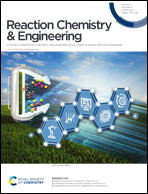Automated multi-objective reaction optimisation: which algorithm should I use?†
Abstract
Multi-objective optimisation algorithms (MOOAs) are, of increasing interest for the efficient optimisation of chemical processes. However, an algorithm's performance can vary on a case-by-case basis, depending on the complexity of the search space and the nature of the underlying response surfaces. This makes appropriate algorithm selection for chemical reaction optimisation a challenging problem. An open-source reaction simulator has been developed, which enables the performance of multi-objective algorithms to be benchmarked against a series of chemistry-inspired test problems. The performance of four different MOOAs were compared, including three state-of-the-art Bayesian optimisation algorithms, and their ability to optimise different types of systems quantified using the hypervolume metric. In general, EIMEGO was found to achieve the highest hypervolume in the lowest number of experiments and was only outperformed by TSEMO in cases with three objectives. To verify the simulated results, EIMEGO and TSEMO were tested experimentally using a three-objective optimisation of methyl phenyl sulfide oxidation. Both algorithms successfully identified a trade-off between conversion, selectivity, and productivity with respect to the desired sulfoxide. In this case, TSEMO outperformed EIMEGO in terms of hypervolume, which was in agreement with the simulated results.



 Please wait while we load your content...
Please wait while we load your content...